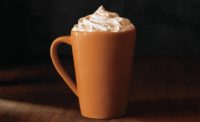How sweet it is to be in the candy industry these days.
In 2020, retail saw a rise in sales across seemingly every category, candy included, as people stayed at home and sheltered in place. A July 10, 2020 USAToday article noted that during the 17 weeks ending June 27, 2020, chocolate sales were up 6.3 percent over the same time period the year before, as Americans spent $3.7 billion on chocolate (milk chocolate being the favored flavor).
Chocolate was a comfort for many and rose 3 percent in sales, while non-chocolate candy rose 4 percent. The National Confectioners Association’s (NCA) 2021 State of Treating report notes that confectionery sales overall were down slightly in 2020, mainly in categories like gum and mints. This year, however, candy sales are sweetening up — data from Chicago-based IRI shows dollar sales of chocolate candy are up 6.2 percent, and non-chocolate candy sales are up 5.3 percent, for the 52 weeks ending May 16.
As pandemic restrictions are easing in some parts of the country and consumers move beyond their own backyards, their candy consumption hasn’t waned. In fact, a recent report from IRI shows that chocolate candy continues to improve its consumption, and the candy industry is expected to grow, hitting $39.5 billion in sales by 2025.
That’s good news for the candy industry because consumers are willing to indulge in a sweet treat for a sense of normalcy while navigating the uncertainties of the pandemic. At the same time, consumers are still striving toward a healthy lifestyle. Given the need for both comfort and health, the trends appearing across the candy industry may or may not have legs. Here are some trends we see sticking around longer than an everlasting gobstopper.
Candy sustainability
More and more, consumers are looking for brand and product transparency — they want to know how products are sourced, made, and their impact on the world around them. It’s no surprise then that these types of sustainability measures impact the candy sector as well.
The NCA’s 2021 State of Treating report shows that almost half (41 percent) of consumers want transparency in ingredient sourcing and production, and those two things influence what they purchase. According to the NCA’s report, all-natural, no artificial colors or sweeteners, non-GMO, and no high-fructose corn syrup were the most-sought claims for consumers purchasing candy.
RangeMe's data on new products and retail buyer activity confirms that these consumer trends will continue to play out on retail shelves moving forward. RangeMe currently has more than 1,800 USDA organic-certified candy products listed, and since January 2021, Fair Trade America and Fair Trade USA were the top two transparency certifications searched by food retail buyers on the platform. In April 2021 alone, there were more than 400 buyer searches for non-GMO products.
Innovation and diversity
Candy has long been known as an industry where innovation is key, and remaining stagnant can be a death knell for business. The past year has seen candy companies big and small introduce new flavors and formats to keep consumers interested. From Hot Tamale-flavored marshmallow Peeps to KitKat Duos, candy makers across the board are willing to try something new to tag the flavors consumers want and reposition themselves against emerging brands trying to make their mark on the candy aisle.
While flavor is a big component for these emerging brands, they’re also setting themselves apart by targeting the values consumers seek, such as diversity. Candy produced by diverse suppliers, such as women- or black-owned businesses, is also trending with consumers.
Buyers are increasingly searching for new sources of diverse-owned brands to meet their customers’ needs. Since January 2021, food buyers on RangeMe have searched more than 6,000 times for products made by minority-owned businesses and more than 4,000 times for women-owned businesses.
Size matters
There has been a seismic shift in how consumers shop, and not only have they changed how they buy things, they’ve changed the way they consume products.
Pantry stocking soared to new heights in early 2020. While many consumers have returned to frequent trips to the store and smaller basket sizes, they are still looking for products that offer them a way to keep sweet treats on hand but in individual packs that are more portion-controlled and easy to grab-and-go.
Though consumers turned toward comfort foods, particularly in the early days of the pandemic, many quickly moved back into a mindset of indulgences in moderation, and that trend is continuing. Better-for-you treats are a mainstay in the sweets industry, but some candy manufacturers are downsizing the size of their treats to meet consumers’ desires to indulge smartly.
Kinder Bueno Minis and Snickers’ Almond Brownie squares, for example, not only speak to the continued innovation of the candy industry, but also consumers’ want of bite-sized indulgence. As John Downs, CEO of NCA told Forbes, “Our companies are striving to meet consumers’ demands for transparency and smaller portions. We want them and their families to enjoy their favorite treats while helping them manage their sugar intake.”
Functional confectionery making strides
Products featuring CBD are making strides across all of CPG, and it’s now starting to cut a path into confectionery as well. Watch for more CBD-related candies to hit the market as CBD continues to gain traction and acceptance with consumers and weaves into healthy lifestyles.
Chocolate makers, too, are reworking and revising their product lineup to offer functional benefits, from more dark chocolate offerings to incorporating Ruby chocolate, which is touted as being rich in antioxidants.
Online is on fire
With many consumers still limiting their shopping trips — or fully embracing online grocery shopping and delivery — catching consumers’ attention for impulse purchases or new product tryouts as they stroll down an aisle isn’t quite what it used to be. What was once a central part of a brand’s marketing is not as frequent as it used to be, and because of this, many brands have turned to online marketing to keep their products front of mind with consumers.
Candy brands are catching consumers where they are — namely, on social platforms like Facebook and Instagram — and marketing their products, line extensions, and new launches in the social space. The Sour Patch Kids brand, for example, launched a TikTok page in 2020 after noticing many of their consumers were “hanging out” on there during the pandemic. Using a mix of art and science, the brand became the most-followed snack on TikTok, with more than one million followers.
Candy trends here to stay
The past year has brought major changes across all retail sectors, and candy has seen a wild ride. With two major candy holidays — Halloween, Christmas, or for some, any day that ends in Y — around the corner, some of the key trends are here to stay. The trends that have been building over the past year will continue sparking consumer and retail buyer interest in candy, based on the growth we’ve seen in 2021. As candy makers innovate and reinvigorate the candy aisle, tapping into these sweet trends will spell success for brands — and the consumers that love them.







